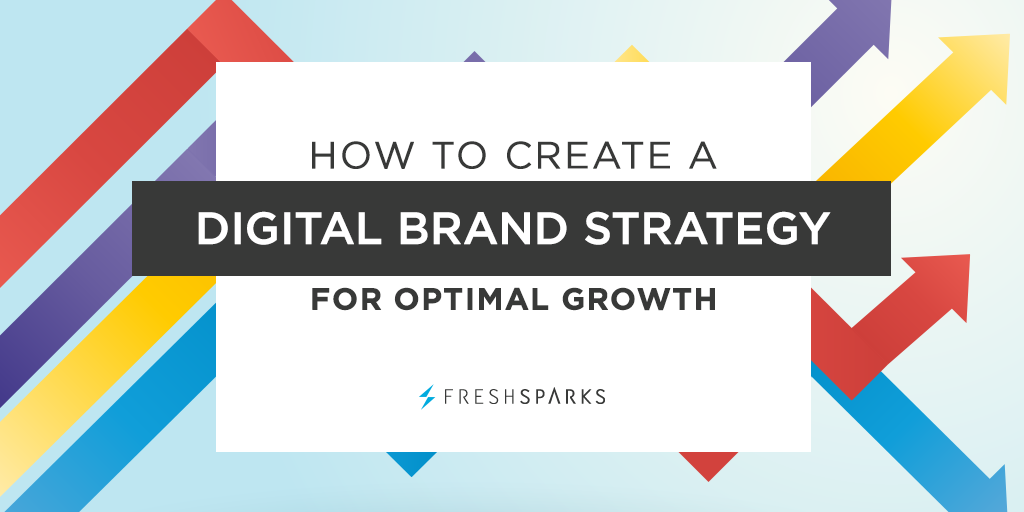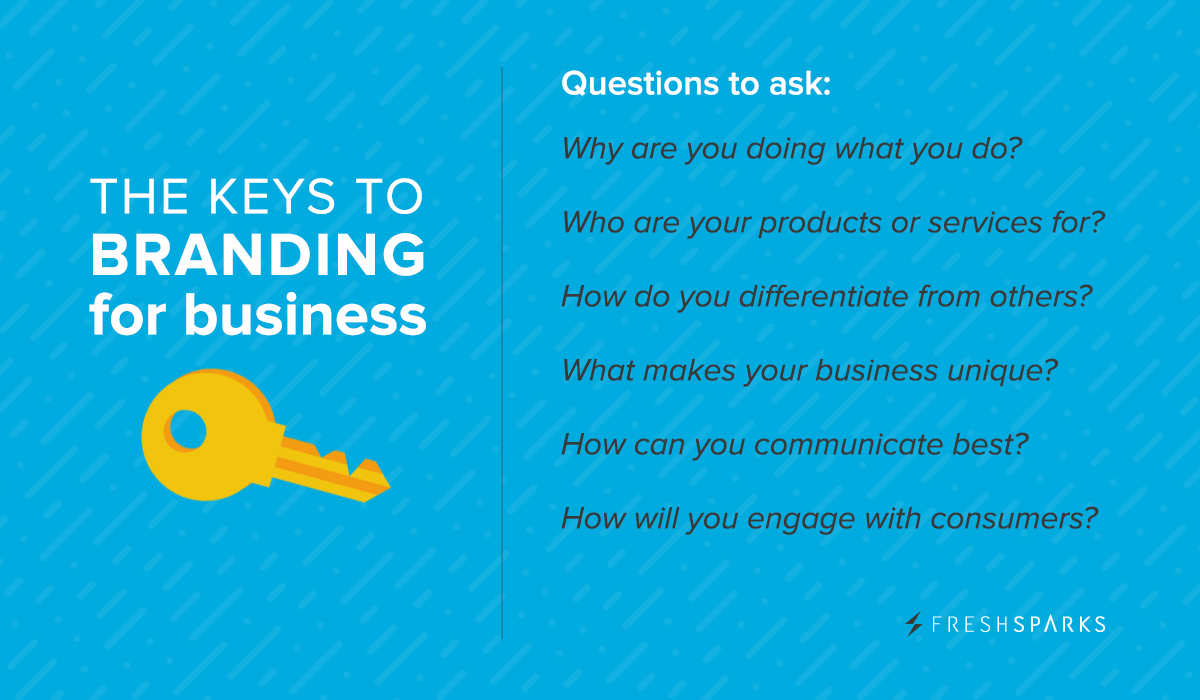
What do you think is the most vital piece of brand building for 2022?
I’ll tell you: it’s developing a consistent digital brand strategy to use as a guide for successful growth.
This challenging but rewarding process will guarantee long-term gains for your business or personal brand.
Not only am I talking about ROI, but you’ll see an overall increase with more intangible things like:
- trust,
- awareness,
- loyalty, and
- advocacy.
Consider the above four things as priceless assets in this day and age of competitive marketing and advertising.
It can take 5 to 7 brand impressions before someone will remember your brand.
What’s more, not all impressions are good ones.
Having a solid brand building strategy is the key to being perceived the right way.
After all, your brand is defined by a customer’s perception of your business.
 |
THE ULTIMATE GUIDE TO BUILDING A BRAND Use our step-by-step workbook with tips, templates, and guidance to help build a brand for your business! Find your target audience, research competitors…and much more.GET IT NOW |
Did you know over 50% of consumers follow at least one brand on social media?
While your digital brand strategy will encompass a number of elements, this social media stat really drives home the importance of optimizing your campaigns with your end user in mind.
So, how can you do that exactly?
It comes down to fully understanding your brand vision and your audience.
When you have a handle on these two things, you can make the most of successful digital brand strategies as they evolve over time.
Despite inevitable change, success does center around developing a consistent process by which you design all of your brand’s campaigns. This process is what your company will use to implement high performing strategies for execution.
[click_to_tweet tweet=”Your brand is defined by a customer’s perception of your business. #branding #smallbiz” quote=”Your brand is defined by a customer’s perception of your business.”]
In this article, I’ll share insight on:
- Essential keys to branding your business
- Developing brand strategy guide for growth
- Brainstorming a digital brand strategy plan
Ready to get started?
First, let’s review the basic definitions of online brand strategies and digital branding.
What is a brand strategy?
A brand strategy is a comprehensive plan that focuses on the long-term development of your brand purpose, consistency, and emotional impact. It defines how you differentiate from the competition with a distinct identity.
Brand strategies are based on specific goals like:
- Increasing overall awareness
- Building positive perception through interaction
- Encouraging loyalty and advocacy
>> Learn how to create an impactful brand strategy here
What is a digital strategy?
A digital strategy is part of an overall marketing plan. It focuses on all the components that help drive business growth in the form of leads and sales generated. This occurs mainly via online channels.
Which strategy best helps a famous brand company reach consumers?
While brand strategy aims at positioning your business, digital strategy determines the tools to get you there. Every famous brand company requires a digital strategy to reach consumers.
A digital strategy plan might include things such as:
- Website user experience
- SEO & content marketing
- Social media marketing
- Email marketing
- Paid advertising (PPC)
[click_to_tweet tweet=”Brand strategy aims at positioning your business, while digital strategy determines the tools to get you there. #branding #digitalmarketing” quote=”Brand strategy aims at positioning your business, while digital strategy determines the tools to get you there.”]
Put the above together, and we can now answer the question you came for:
What is a digital brand strategy?
A digital brand strategy encompasses everything a digital strategy has, but it is founded on the principles of your brand’s guidelines and goals. Those principles are, of course, outlined in your overarching brand strategy.
It sounds simple, but only if you are aware of the essential keys to branding your business effectively.
I’ll explain…
The Keys to Branding for Business
Every business needs to review these main components of branding, before attempting to create a digital brand strategy.
Each one of the elements helps to define foundational pieces of your business. They are the things that rarely, if ever, change. Furthermore, these cornerstone qualities guide your brand so that you can develop effective processes.
Ensure you have a good answer to the important questions aligned with each component of branding for business:
- Brand purpose
- Target audience
- Competitor analysis
- Brand voice
- Qualities and benefits
- Brand recognition

Brand Purpose
Why are you doing what you do?
Outlining an answer ensures you not only understand your products and services, but you know the why behind providing them.
The exercise of determining your brand purpose can be an umbrella to also include:
- Mission
- Vision
- Values
- Tagline
SEE ALSO: Brand Purpose: How to Find Your Why with 7 Powerful Questions
Target Audience
Who exactly are you providing products or services for?
If you don’t understand your consumer, everything else you do to build your brand will not have a positive impact on business goals.
Defining your target audience is one of the most important things you can do when developing your brand.
You want to figure out the specific lifestyle, buying habits and behaviors of your consumers (without trying to be everything to everyone!).
>> Determine the exact target audience for your brand
[click_to_tweet tweet=”If you don’t understand your consumer, everything else you do to build your brand will not have a positive impact on business goals. #branding #smallbiz” quote=”If you don’t understand your consumer, everything else you do to build your brand will not have a positive impact on business goals.”]
Competitor Analysis
How can you differentiate from others?
You’ll need to spend some time reviewing your competitors in the marketplace. This helps to pinpoint exactly what you do differently (and better!).
Take a look at the key players in your industry. Study those who will directly compete with your brand, and also any benchmark brands that you’d like to model.
Qualities and Benefits
What makes your business unique?
Chances are that you are not the only business providing the services or products you offer. However, you are the only business with your own specific process, team members, and skill set.
Determine what makes your business distinct. For example, why you feel you’re the most valuable, or the most forward-thinking…whatever it may be.
Brand Voice
How will you communicate with your audience?
Maintaining consistent messaging in a cohesive voice will help your brand image become recognized on multiple channels in the same way.
You don’t want to be fun and conversational in one place, and formal in another. Your voice is used to convey the brand’s message to consumers so they can “get to know you”
Remember, your brand’s voice is how you want to be perceived. Make sure you are giving off the right impression by developing it carefully.
[click_to_tweet tweet=”Maintaining consistent messaging in a cohesive voice will help your brand image become recognized on multiple channels in the same way. #branding #smallbiz” quote=”Maintaining consistent messaging in a cohesive voice will help your brand image become recognized on multiple channels in the same way.”]
Brand Recognition
In what ways will you engage with consumers?
Here’s where you’ll put everything into practice through engagement. Building rapport and recognition with your audience is done through consistency.
Consistently engaging breeds trust through brand recognition. The important thing is ensuring that engagement is both memorable and meaningful.
You’re going to digitally engage with your consumers in many ways. When developing new campaigns, keep the above keys to branding in mind to enhance your chances of success.
S P O T L I G H T

What Does A Brand Strategist Do?
If creating a digital brand strategy plan seems daunting, hiring a brand strategist is a valuable investment.
Whether you choose to bring this person on full-time (large companies often do), or hire the perfect consultant for your business, working with a professional will set you up for long-term success.
What does a brand strategist do exactly? This role often consists of:
- Defining your brand’s elements and consumer-facing voice
- Ensuring consistent and effective brand messaging
- Conducting market research analysis to anticipate future trends
- Making positioning recommendations to enhance sales of products and services
- Developing a brand digital marketing strategy for long-term growth
A brand strategist is a detail-oriented professional with an innate ability to develop effective processes.
They are able to implement these processes to ensure your brand is able to stay on the cutting-edge while being perceived cohesively across all platforms.
In summary, the role of a Brand Strategist in the success of your strategic digital branding campaigns makes them an indispensable part of your growing business.
 |
THE ULTIMATE GUIDE TO BUILDING A BRAND Use our step-by-step workbook with tips, templates, and guidance to help build a brand for your business! Find your target audience, research competitors…and much more.GET IT NOW |
Planning Your Brand Development Strategy
Any brand strategist will tell you, developing a brand strategy plan is a fancy way of describing the development of a process.
When it comes to growing your brand digitally, the best thing you can do is create and refine the process behind your brand development strategy.
It all comes down to planning.
The first element of any digital brand development strategy is creating the plan so you can use and re-use it as your company grows. It’s the most effective way to maintain your brand standards as you scale, and execute marketing campaigns efficiently.
This of it this way:
An architect uses the same process to curate a new build even though each design is unique.
Or:
A chef preps for a busy night at the restaurant, in the same manner, each time although the dishes may vary.
Your business will develop new marketing campaigns using the same effective process even though the content and platforms will change.
From development to creation to execution to reporting, everything is done countless times. Hence, creating a brand strategy process allows you to streamline that cyclical effort when you are ready to execute your second, third and fortieth marketing campaigns.
[click_to_tweet tweet=”When it comes to growing your #brand digitally, the best thing you can do is create and refine the process behind your brand development #strategy.” quote=”When it comes to growing your brand digitally, the best thing you can do is create and refine the process behind your brand development strategy.”]
Digital Marketing Campaign Elements
Here are some things you will nearly always include in a strategically designed digital marketing campaign:
- Brand voice guidelines
- Content strategy by platform
- Digital asset creation process
- Social media engagement process
- Ongoing SEO auditing and implementation process
- Paid advertising process
- Analytics reporting process
Depending on the size of your company and your digital marketing budget, you may include more or less.
SEE ALSO: 7 Effective Social Media Best Practices for Business
A larger company may implement all of the items listed above, plus:
- Email marketing processes for acquisition, design, segmentation and retargeting
- Curated content (blogging) for SEO and social media content processes
- Partnership and cross-promotional processes
- Influencer management process
- Social media customer service process by channel
- …and the list goes on.
So then, what is the best process to manage all of this activity?
Use these five steps as a guide to your brand development strategy for marketing:
1. Identify Your Keys to Branding
As outlined earlier, the essential components of your branding will help with the creation of every new marketing campaign.
Also, consider the following things when developing a new process for the brand development strategy:
- What is your mission and how will that be ever-present through all of your marketing campaigns?
- What is your digital brand voice?
- Where does your online community consume content?
- How will you engage with your audience meaningfully?
2. Define Team Responsibilities
Having clearly defined roles helps everyone from the executives to the individual contributors. Determine each person’s responsibilities as it relates to your upcoming marketing campaign.
Some of those roles might include:
- Project Manager
- Content Creator
- Designer
- Developer
- Advertising Manager
- Analysis and Reporting
- Quality Assurance
3. Develop Your Brainstorming And Refining Process
Next, you should develop your actual brainstorm and refining process.
For example:
Two-week project ramp-up includes a kickoff, a review and refinement period, a PM review and compilation, and a final commitment.
(I’ll go more in-depth on this later!)
4. Determine Your Goals and KPIs
You cannot track the success of your campaigns without first defining what success looks like to you.
First, create S.M.A.R.T. goals for business growth.
Then, develop a list of key performance indicators to track regularly.
Some common KPIs include:
- Traffic
- Conversion
- Cost Per Acquisition
SEE ALSO: 19 Important Metrics for Measuring Digital Marketing Success
Of course, there are a whole bunch of other metrics to include in your digital branding strategy, according to what is important to your business goals. You may want to group them in the following categories.
- Marketing
- SEO
- Pay-per-click
- Social Media
- Website
Take a look at this breakdown of KPIs from Content Marketing Institute for more ideas.

5. Create Your Reporting Template
Once you have determined your KPIs, your analyst will use them to report back on each campaigns successes and failures.
Ideally, the KPIs will be used to track progress throughout the marketing campaigns within your digital brand strategy so you can make adjustments along the way. This helps optimize your efforts and generate the highest possible return.
Keeping records like these reports helps a brand build a bank of valuable data.
What’s working?
What isn’t working?
How are trends changing over time and how do we capitalize on them?
Brainstorming a Digital Brand Strategy for Marketing
Once you have a digital brand strategy framework, it will be so much easier to develop new strategic initiatives for marketing your business.
As promised, let’s take a deeper look at the framework of your digital brand strategy in relation to marketing activities: the brainstorming process.
This is where the magic really happens. When done effectively, every marketing campaign enters the development and subsequent execution phase with the best chance of success.
Take a look at the example of our digital marketing brand strategy brainstorming process below.
This example covers a time frame of 2-3 weeks to ramp up. Remember, it utilizes all aspects of the digital branding elements already defined for a company.
Day 1: Kick off brainstorm.
This meeting is used to generate digital marketing campaign ideas and then solidify the direction. From here, each team member knows what they need to develop in their outline.
Days 2-5: Team reviews and refine.
Each team member is tasked with building an outline of their individual piece of the puzzle. From the content manager to the analyst, this time is spent reviewing and refining the campaign’s direction as a team so the plan is in place.
Days 6-8: Project Manager review and compilation.
During this phase, all outlines are submitted to the Project Manager to be compiled and reviewed. The PM will likely have breakout sessions with some team members to further refine their responsibilities.
Days 9: Final team review.
This meeting brings everyone together and is led by the Project Manager. The PM goes over the campaign’s direction in detail. Then, the team works together to identify any gaps.
Days 10-12: Last refinement and campaign finalization.
Team members work to fill any gaps that were identified and fully refine the campaign’s elements before the PM finalizes the plan.
Once this phase is over, each team member can get to work developing the content and executing the campaign. Committing to this process ensures everyone’s piece of the puzzle is on brand. And, nothing gets missed as your ongoing marketing activity takes shape.
As mentioned, creating a successful digital brand strategy ultimately centers on planning. Therefore, if you develop a strong process to help during the planning stages, your marketing has a much greater chance of success.
Conclusion
Understanding the keys to branding is a starting point for creating any digital branding strategy:
- Understand what you do, why you do it, and who you do it for.
- Determine what makes your business unique.
- Maintain a cohesive brand voice across all platforms.
- Engage in a meaningful way to increase brand reputation.
Remember to implement these elements of a brand strategy for any given marketing campaign to promote growth in many ways. This process for a successful brand development strategy includes:
- Identifying your keys to branding.
- Defining the responsibilities each team member will take on during any given project.
- Developing a brainstorming and refining process that works for your team.
- Determining a list of goals and KPI metrics that define your company’s success.
- Creating a reporting template to document the data and metrics.
What questions do you have about developing a digital brand strategy plan?
Share with us in the comments below!
 |
THE ULTIMATE GUIDE TO BRAND BUILDING Use our step-by-step workbook with tips, templates, and guidance to help build a brand for your business! Find your target audience, research competitors…and much more.GET IT NOW |
FreshSparks is a brand agency specializing in strategy, design, and digital marketing. We can help you with creating digital brand strategies that will grow your business. Get a complimentary consultation for your next project.
If you liked this post, please share!

Very useful information shared
Many thanks
Thanks for the comment, Abiola! Glad it was useful to you.
Hello.. thanks for this all articles.. usefull
You’re welcome, Ayu! Appreciate the feedback.